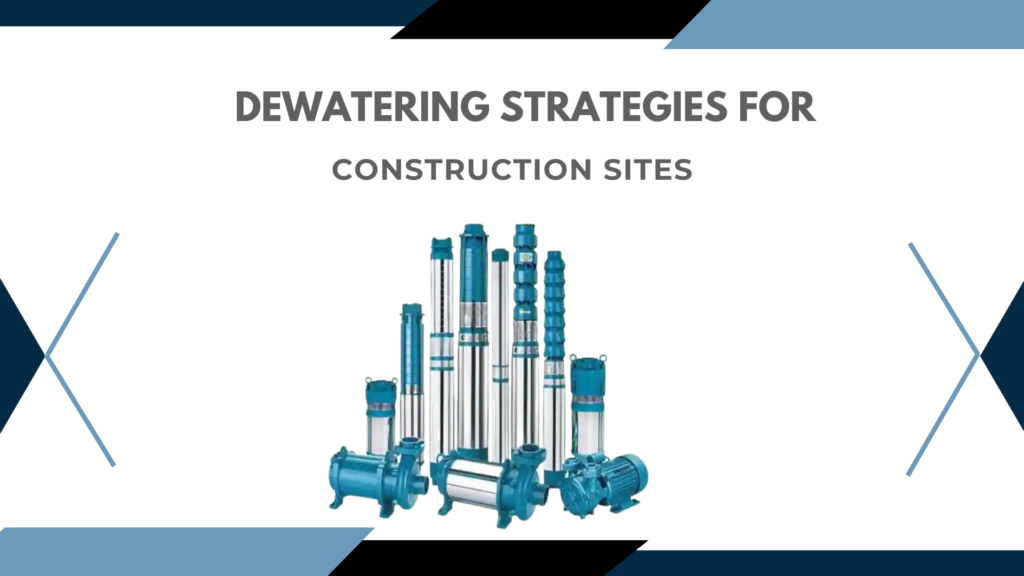
Dewatering is the process of removing ground or surface water from a construction site. This is necessary to ensure the safety of workers and prevent damage to equipment. VEMC is the leading Kirloskar water pump dealer based in Mumbai,
In this blog, we talk about the various dewatering strategies for construction sites.
Site assessment
Before dewatering, you need to figure out the nature of water on the construction site, that is, whether it is only superficial or groundwater. Next, find out what kind of sediments are present and how to separate them from the water. You must also ensure there are no hazardous contaminants present, that can pose risks to the workers. Find out which features of the construction site can naturally assist (such as a slope) or challenge your dewatering process.
Ensure compliance before dewatering
All construction sites need permits from state or local governments before dewatering. Make sure you fulfil the criteria and have the right permits before starting the work.
Dewatering strategies
Now let’s discuss the various dewatering strategies that effectively remove water from any construction site.
1. Wellpoint
In this method, wells are drilled all around the construction site at predetermined depths in straight lines of rectangular formations. A flexible swing pipe is used to create the necessary suction. At the rear end of the header pipe, a vacuum pump is installed. Groundwater enters the wellpoints, runs through the pipes and the pump, and finally discharges into the containment tank. This method is effective for sites with water only at 6 meters below the pump level.
2. Eductor or Ejector wells
Eductor wells use the Venturi effect. This states that when a high-pressure liquid flows through a narrow pipe section, its pressure reduces. On the other hand, water at the ground level is at a higher pressure and thus it flows towards the low-pressure supply line through riser pipes. It is then drained out using multiple pumps. This method is best for handling low-permeability soil at great depths.
3. Open sump pumping
This technique uses gravity rather than pressure to reduce groundwater levels. Shallow pits or ‘sumps’ are dug around the construction site at a lower level. The surrounding water simply converges and flows into these sumps and is removed using pumps. This strategy is useful in sandy or gravelly areas.
4. Deep wellpoint
Just like the conventional wellpoint method, the deep wellpoint involves drilling narrow wells (150-200 mm) all around the site. The groundwater falls into these wells and is then removed using a submersible pump. This method is useful at deep excavation sites requiring large discharge volumes.
Common challenges in dewatering
As water pump dealers would warn, dewatering can cause serious challenges on a construction site:
- Surface flooding
- Risk of erosion and other related issues
- Damage to adjacent buildings or property
- Dampness that creates unhealthy site conditions
- Adverse effect on the building structure due to variations caused in soil conditions
Construction site dewatering is a matter of expertise. To know more about it or seek assistance from our experts, call us on 022 43436655 or email us at marketing@vemc.co.in. We at VEMC take pride in being the top-notch Kirloskar pump distributors in Mumbai.

